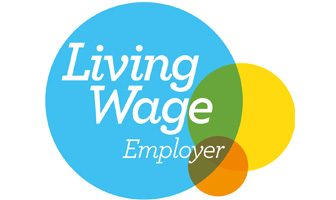Blog
Blog Posts
Customer engagement metrics are key to understanding whether your customers are happy and loyal or at risk of churn. Tracking the right customer engagement metrics enables you to identify issues early and take corrective action to improve the customer experience.
There are many different customer engagement metrics that you can track, but not all of them will be relevant to your business. The most important thing is to choose metrics that align with your business goals.
Avoid Vanity Metrics
One big mistake that small businesses make is tracking vanity metrics, which are metrics that don't actually have any real impact on the business.
For example, tracking the number of "likes" or "shares" a blog post gets is a vanity metric. These metrics may make you feel good, but they don't actually tell you anything about whether your customers are engaged or whether they're likely to do business with you again.
The customer engagement metrics you should track will depend on your business goals, but some that are relevant to all businesses.
1. Customer Retention Rate
Your customer retention rate is a measure of how many of your customers remain loyal and continue doing business with you over time. This metric is important because it's much cheaper to keep a customer than it is to acquire a new one.
There are a few different ways to calculate your customer retention rate, but the most common is to take the number of customers you have at the end of a period and divide it by the number of customers you had at the beginning of the period.
For example, if you had 100 customers at the beginning of the year and you still have 100 customers at the end of the year, your customer retention rate would be 100%.
2. Customer Churn Rate
Your customer churn rate is the opposite of your customer retention rate. It's a measure of how many customers you lose over a period of time.
Just like with customer retention, there are a few different ways to calculate customer churn, but the most common is to take the number of customers you had at the beginning of a period and subtract the number of customers you have at the end of the period.
For example, if you had 100 customers at the beginning of the year and you ended the year with 90 customers, your customer churn rate would be 10%.
3. Net Promoter Score
Your Net Promoter Score (NPS) is a measure of customer satisfaction. It's a numerical score that ranges from -100 to 100.
To calculate your NPS, you survey your customers and ask them how likely they are to recommend your business to a friend or family member. The respondents are then placed into one of three categories:
- Promoters (score 9-10): These are your happiest customers who are likely to continue doing business with you and to recommend you to others.
- Passives (score 7-8): These are customers who are satisfied but could be lured away by a competitor.
- Detractors (score 0-6): These are customers who are unhappy with your product or service and are at risk of churning.
To calculate your NPS, you take the percentage of respondents who are promoters and subtract the percentage who are detractors. So, if 50% of your respondents are promoters and 10% are detractors, your NPS would be 40.
4. Customer Lifetime Value
Your customer lifetime value (CLV) is a measure of how much revenue a customer will generate over the course of their relationship with your business.
This metric is important because it helps you to understand which customers are most valuable to your business and how much you can afford to spend to acquire new customers.
In order to calculate customer lifetime value, take the average revenue per customer and multiply it by the average customer lifespan.
So, if the average customer spends $100 per year and the average customer lifespan is 10 years, the customer lifetime value would be $1,000.
Final Thoughts
Of course, these metrics are just a starting point when it comes to measuring customer engagement, but they're a good place to start. If you're not tracking these metrics already, start doing so today and use them to guide your business decisions.
Add a comment:
Since Andrew has come on board under the supervision of Mike the transition could not have been smoother. The service and response has been well above expectations. We feel the Payroll services provides an additional backup service provided by Kings Oak Accountancy which takes away yet another task from our busy workload.
Mujib Choudhury, Atlantic Linen
Great to work with, always there to give a hand when needed. Always at the end of the phone when problems need sorting We have been with this Company for many years, would recommend . Running my accounts and PAYE, so this leaves us to concentrate on getting on with our business with no worries.
Sarah – Crossways Tavern
ACCREDITATIONS







